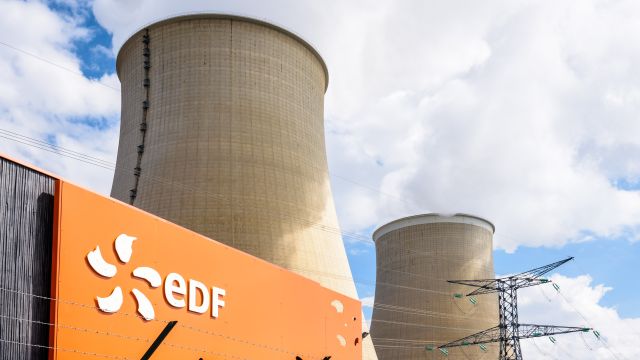
Situation of the nuclear power plants in France - how has the situation evolved in our neighbouring country since the summer?
From electricity exporter to importer
By mid-August 2022, more than half of the 56 nuclear reactors in France were offline. The reasons for this were safety-relevant damage in the safety injection system, heat or drought, and scheduled shutdowns. As a result, France, a traditional electricity exporter, imported significantly more electricity in 2022 (72.9 TWh) than it exported (56.5 TWh) (figures from "Energy Charts"). For comparison: in 2021, exports were still 44 TWh higher than imports. The main reason for this is the longer-term unavailability of part of the reactor fleet.
For example, the output of French nuclear power plants in the months April to November was 30 GW or less (figures from "Electricity Maps") - out of a total installed capacity of 61 GW. However, electricity production has steadily increased since August. The available generation capacity from nuclear power climbed within five months from about 24 GW in August to a good 37 GW in December 2022. Today (10.01.2023), about 44 GW of electricity is being generated from nuclear power.
Reasons for the rise in electricity production
What causes this rise? First of all, heat and drought play a negligible role in winter. However, the influence of these two factors was marginal anyway due to the temporary raising of the limits by the French regulatory authority ASN last summer.
On the other hand, the scheduled inspections and repair work on the welds in the safety injection system have now been completed at some NPPs. As at today (10.01.2023), 12 of 56 plants are still off the grid. With regard to the NPPs affected by the corrosion problem, it can be said that the inspection or repair of some of the plants has already been completed; however, some reactor units are still not in operation and work is continuing.
All plants to be examined by 2024
In addition, not all plants that might be affected by the corrosion problems have been examined by any means. EDF plans to carry out the outstanding inspections as part of the planned annual shutdowns (for overall maintenance inspection or refuelling) by 2024. (The article linked above describes what exactly the corrosion problem of the French NPPs is all about; it will also be updated if there are any relevant new developments).
These shutdowns usually last about one to two months and among other things also serve to change the fuel assemblies . In addition, those plants that will have been in operation for 40 or 50 years in 2023 will undergo a test for a lifetime extension of another ten years, which usually takes about five to six months. These inspections traditionally take place in the warmer months, when the demand for electricity in France is lower than in winter - after all, more than a third of households in France rely on electricity for heating, compared to only about 5 % in Germany.
Flamanville-3 commissioning delayed further
This year, too, several units are to be inspected and undergo maintenance, and in some plants inspections and, if necessary, repairs due to stress corrosion cracking will be added. The decisive factor for electricity production in France will therefore be how quickly the inspections and, where necessary, repairs can be carried out in the plants. Should any complications arise here, France would again be dependent on electricity imports from abroad in the coming winter, especially as the commissioning of the new EPR reactor Flamanville-3 is further delayed: loading it with fuel is currently scheduled for the first quarter of 2024.